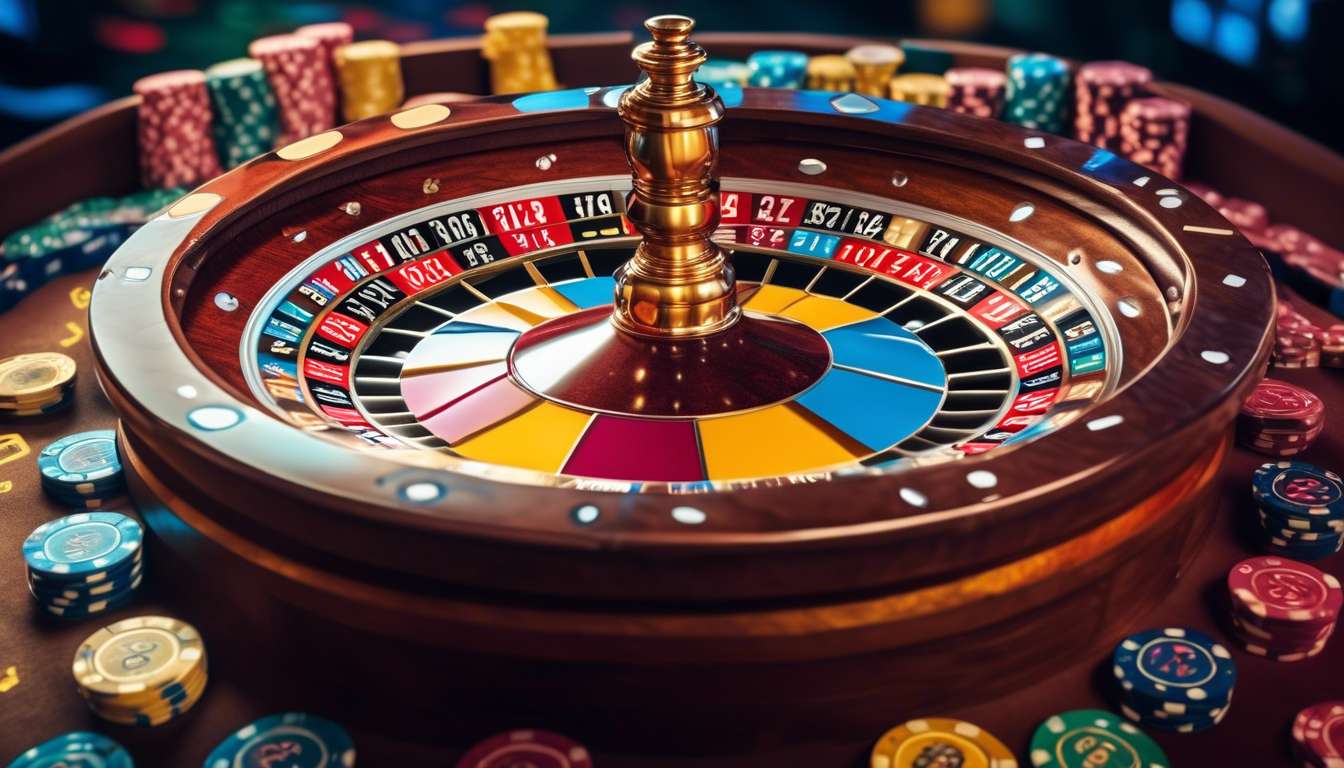In the thrilling world of betting, we often find ourselves fascinated by the numbers and odds that dictate our potential winnings. As enthusiasts, we seek to unravel the mysteries behind these figures, understanding how they reflect probabilities and influence our strategies.
In this article, we delve into the mechanics of odds, exploring how they represent the likelihood of various outcomes and guide our betting decisions. Together, we will discover the intricate relationship between odds and probability, learning how to interpret and leverage them to enhance our betting experience.
By examining different types of odds, we aim to demystify the complexities and empower ourselves with knowledge. The three main types of odds are:
- Fractional Odds: Common in the UK, they show the ratio of profit to the stake.
- Decimal Odds: Popular in Europe, they represent the total payout, including the stake.
- Moneyline Odds: Used in the US, they indicate how much you need to bet to win a certain amount or how much you can win with a set bet.
Join us as we embark on this analytical journey, equipping ourselves with insights that could potentially transform our approach to betting and, ultimately, increase our chances of reaping the rewards.
Understanding Odds Representation
Odds Representation in Betting Markets
Odds representation is crucial for understanding how betting markets operate and gauging potential outcomes. We all know that feeling of wanting to belong to the savvy group of bettors who grasp the intricacies of odds. Let’s delve into how odds, probability, and conversion work together to give us that edge.
Understanding Odds and Probability
Odds are the gateway to comprehending the likelihood of an event happening. They aren’t just numbers; they’re the language of probability. When we see odds, we’re seeing a reflection of probability, a percentage chance that something will occur.
For instance, if odds are 3/1, the probability is 25%. Understanding this conversion is key to making informed bets.
Converting Odds into Probabilities
By converting odds into probabilities, we empower ourselves to assess risks and rewards with confidence. This conversion process solidifies our place in the community of informed bettors.
As we become adept at interpreting these figures, we join a collective of knowledgeable individuals, all striving for success. Together, we can make sense of the betting world.
Impact of Probability on Odds
We can’t ignore how deeply probability influences the odds in betting markets. As a community of bettors, understanding this relationship can enhance our shared experiences and success.
Probability serves as the backbone of odds, dictating how likely an event is to occur. When we grasp the concept of probability, we can convert it into odds, providing a clearer picture of potential outcomes.
Odds are essentially a reflection of probability, allowing us to make informed decisions. The conversion process involves:
- Taking the probability of an event.
- Transforming it into a numerical expression—odds.
This process not only helps us gauge potential winnings but also brings us together in the pursuit of smarter betting strategies.
As we engage with odds and probability, we strengthen our connections with fellow bettors. By sharing insights and strategies, we become part of a more informed and connected community. Understanding this fundamental relationship improves our betting skills and fosters a sense of camaraderie.
Fractional Odds in Detail
Fractional odds offer a straightforward way to understand and calculate potential returns on bets. They’re expressed as fractions, like 5/1 or 7/2, allowing bettors to quickly determine how much they stand to gain relative to their stake.
- The first number represents the potential profit.
- The second number is the stake.
For example, with 5/1 odds, you’d earn five units of profit for every one unit wagered.
Understanding these odds connects bettors to a community that values clarity and tradition. To convert fractional odds to probability, you can use the formula:
[ \text{Probability (%) =} \left(\frac{\text{Denominator}}{\text{Numerator} + \text{Denominator}}\right) \times 100 ]
This conversion tells you the implied probability of an event occurring. For 5/1 odds, the probability is approximately 16.67%.
As you delve deeper into fractional odds, you bond with fellow enthusiasts who appreciate this traditional format, enhancing the shared experience in the world of betting and making informed, strategic decisions together.
Decoding Decimal Odds
Decimal Odds Overview
Decimal odds are a format that simplifies the calculation of potential returns by directly showing the total payout for each unit staked. This method is widely appreciated in the betting community for its clarity and ease of use.
Key Features of Decimal Odds
- Directness: The decimal number includes both the stake and the profit.
- For example, if the decimal odds are 2.50, it means for every dollar bet, the total return is $2.50.
Converting Decimal Odds to Probability
To understand the likelihood of an outcome, you can convert decimal odds into probability using the following formula:
- Divide 1 by the decimal odds.
- Multiply the result by 100 to express it as a percentage.
- For instance, odds of 2.50 imply a 40% probability:
- ( \frac{1}{2.50} \times 100 = 40\%).
Benefits of Using Decimal Odds
- Simplified Betting Strategies: By using decimal odds, bettors can quickly assess potential returns and probabilities.
- Enhanced Understanding: This format helps align bettors with a shared appreciation for numbers and probability, fostering a sense of community.
Embracing decimal odds not only streamlines betting strategies but also enhances our collective understanding of probability.
Unpacking Moneyline Odds
Let’s delve into moneyline odds, a popular format in sports betting that often intrigues both novice and seasoned bettors alike. In the world of sports wagering, understanding these odds fosters a sense of camaraderie and confidence among us as bettors.
Moneyline Odds in the United States:
-
Moneyline odds display how much we need to stake or can win based on a $100 benchmark.
- When we see a positive moneyline (e.g., +150), it indicates the profit we’d earn from a $100 bet.
- Conversely, a negative moneyline (e.g., -200) shows how much we need to bet to win $100.
Interpreting Moneyline Odds:
These figures aren’t just numbers; they’re a reflection of the probability of an event occurring. The goal is to effectively interpret these odds and grasp the implied probability behind them.
This understanding allows us to:
- Make informed decisions.
- Feel a part of a knowledgeable community.
Let’s embrace this shared journey and enhance our betting strategies together!
Odds Conversion Methods
Understanding how to convert various betting odds into probabilities is crucial for making informed wagering decisions. Different odds formats—such as decimal, fractional, and American—each require a unique conversion method to reveal the implied probability.
Decimal Odds Conversion:
- Take 1 divided by the decimal odds.
- Multiply by 100 to get the probability percentage.
Fractional Odds Conversion:
- Divide the denominator by the sum of the numerator and denominator.
- Multiply by 100 to get the probability percentage.
American Odds Conversion:
-
For positive odds:
- Divide 100 by (odds + 100) to get the probability percentage.
-
For negative odds:
- Divide the odds by (odds + 100) to get the probability percentage.
By mastering these conversions, we enhance our understanding of betting markets. This knowledge not only sharpens our wagering insights but also connects us with a community of informed bettors who prioritize precise insights.
Applying Odds to Betting Strategies
Integrating Odds into Betting Strategies
Understanding the relationship between odds and probability is crucial for making informed betting decisions. By learning how to convert odds into probabilities, we transform abstract numbers into tangible insights, which can significantly improve our decision-making process.
Converting Odds to Probability
Odds represent the likelihood of an event occurring. By converting them into probabilities, we gain a clearer understanding of potential outcomes. This conversion helps us identify value bets—situations where the odds offered by bookmakers are more favorable than the actual probability.
Steps to Convert Odds to Probability:
-
Fractional Odds:
- Formula: Probability (%) = (Denominator / (Denominator + Numerator)) * 100
-
Decimal Odds:
- Formula: Probability (%) = (1 / Decimal Odds) * 100
-
Moneyline Odds:
- Positive Moneyline: Probability (%) = 100 / (Moneyline + 100)
- Negative Moneyline: Probability (%) = -Moneyline / (-Moneyline + 100)
Creating an Inclusive Betting Environment
By adopting a strategic approach to betting, we foster a sense of community and inclusivity. Sharing strategies and successes allows us to learn from each other and place smarter bets, thereby reducing risks.
Benefits of a Strategic Betting Approach:
- Enhanced Decision-Making: Informed choices lead to better outcomes.
- Reduced Risks: Identifying value bets minimizes potential losses.
- Collective Achievement: Sharing knowledge and strategies builds a sense of belonging and success.
By refining our betting strategies through the integration of odds, we create a community united by the pursuit of informed decision-making. This not only enhances individual success but also strengthens the collective spirit of achievement.
Maximizing Profits with Odds Analysis
By analyzing odds with precision, we can identify opportunities to maximize our betting profits.
As a community of savvy bettors, we understand that converting odds into probability is key to spotting opportunities where the odds don’t accurately reflect the true likelihood of an event. This conversion helps us detect value bets—those rare occasions when the odds offered by bookmakers are higher than what we calculate based on our probability assessments.
Together, we can harness our collective insights to make informed decisions.
When we convert odds into probability, we gain clarity that empowers us to bet wisely. This shared knowledge becomes a powerful tool in our quest for profitability. By consistently applying this strategy, we increase our chances of outsmarting the bookmakers and achieving long-term success.
Let’s continue to refine our skills, support one another, and maximize our profits through thoughtful odds analysis.
As a united betting community, we thrive when we align our strategies and share our experiences.
What psychological factors influence betting behavior and decision-making?
When we consider what psychological factors influence betting behavior and decision-making, it’s vital to acknowledge several key elements:
Emotions:
- Emotions like excitement or fear can significantly sway our choices in betting.
- The thrill of a potential win or the anxiety of a possible loss can influence decision-making processes.
Social Influences:
- Observing others engage in betting can affect our decisions.
- Peer pressure or the desire to fit in with a group can lead to increased betting activities.
Cognitive Biases:
- Overconfidence can lead individuals to believe they have a better chance of winning than they actually do.
- The gambler’s fallacy, which is the belief that past events can influence future outcomes, often results in misguided betting strategies.
These factors collectively shape our behavior in the betting realm, highlighting the complex interplay of emotions, social dynamics, and cognitive processes.
How do bookmakers adjust odds to account for market fluctuations and betting patterns?
We adjust odds based on market changes and betting trends.
By analyzing data and monitoring how people are placing their bets, we can make informed decisions. This helps us ensure that our odds accurately reflect the probabilities of different outcomes.
Our goals include:
- Staying ahead of the game.
- Providing fair odds that attract bettors.
- Protecting our interests.
It’s a delicate balance that requires constant attention and expertise.
What are the ethical considerations in sports betting and odds manipulation?
When we think about sports betting and odds manipulation, ethical considerations are crucial. It’s important to ensure fairness and integrity in the betting industry.
Manipulating odds unfairly impacts not just the bettors but also the sports events themselves. This can lead to a loss of trust and potentially harm the reputation of the sports involved.
As a community, we must prioritize:
- Transparency
- Honesty
- Fairness
By doing so, we can uphold the ethical standards of sports betting. This way, we can all enjoy the thrill of wagering on sports with a clear conscience.
Conclusion
You’ve now mastered the art of interpreting betting odds to make informed decisions.
By understanding how odds reflect probabilities and applying this knowledge to your betting strategies, you can maximize your profits.
Key Points to Remember:
-
Analyze Odds Carefully
- Look at how odds are presented and understand the underlying probabilities.
-
Consider Different Conversion Methods
- Use various methods to convert odds into probabilities for better insights.
-
Continually Hone Your Skills
- Keep learning and adapting your strategies to stay ahead.
Stay ahead of the game in the world of betting. Happy betting and good luck!




